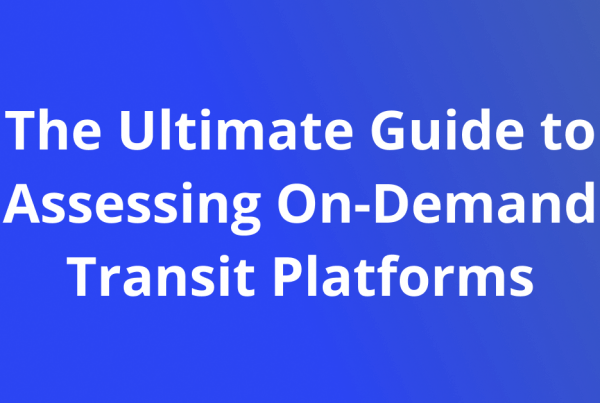How Transit Agencies Can Better Design RFIs/RFPs for Successful On-demand Projects
By: Miranda Desa & Gurjap Birring
Cities are transitioning into a future of new and unique challenges in transportation and are making efforts to adapt to the changing needs of their residents. Many transit agencies are developing mobility projects and planning pilots in an effort to find innovative solutions to the challenges they face.
Participating in efficiency-focused mobility projects that also help local governments provide access to education, employment, and healthcare, is something Pantonium is always interested in. However, we sometimes see that Requests for Information (RFIs) and Requests for Proposals (RFPs) are structured in ways that discourage innovation and efficiency and preclude many parties from participating.
Our main recommendation: transit providers should look at software and operators separately, to find the best solution on each front.
Here are some of our thoughts on how we believe RFIs/RFPs could be better structured to encourage innovative solutions.
Giving Software Due Consideration
If you are evaluating different options, how much weight is being placed on the actual technology that is optimizing the operation of the new or “innovative” transit solutions?
From a software perspective, in the “real-time route optimization” space, the metric that tells you the most about the power of each software is Rides per Vehicle Service Hour (RSH), also known as productivity. RSH tells you the power of an optimization engine in a similar way that horsepower tells you the power of a traditional engine. Without enough power, optimization engines cannot be productively used on large vehicles.
If the focus is to find a transit solution that makes a real difference in productivity, then the technology at the heart of everything should be given appropriate deliberation.
RFPs Should Be Structured With a Broader Scope
Many RFPs are framed to specifically request services and responses from turnkey solution providers, or 3rd Party Bus Operators. This approach has some important consequences.
- Bus Operators may not have the same interest as transit agencies do in increasing efficiency and reducing costs. For example, an operator paid by the kilometre, may lack the incentive to pay extra money to obtain the best software that would reduce mileage and greenhouse gas emissions.
- These types of RFPs usually preclude software companies from participating, as they are rarely in the business of bus operations.
a) Pantonium’s software is meant to be easily layered on top of existing transit operations, whether it’s in-house or outsourced. We look to use the existing assets (vehicles/buses/existing bus stops) used by the city, with no need for additional capital expenditures (new vans/vehicles, as an example).
- It is important to consider the quality/productivity potential of the software leveraged by a bus operator.
- Service metrics and compensation models of the transit agency and bus operator should be in line with the transit agency’s goals and values. For example, if increasing ridership is a goal, it is helpful for increases in ridership to lead to higher compensation for the bus operator. Additionally, we find that compensation based on mileage tends to be detrimental to encouraging innovation and productivity. When framing an RFP, we believe that the following considerations can assist in achieving results in line with agency’s objectives:
a) What is the ultimate objective of this service and how should we measure it?
b) How can compensation be structured in a way that will motivate bus operators to achieve a goal in line with the agency’s objectives?
c) What Service Quality parameters are important for our agency?
i. Productivity (Rides per Vehicle Service Hour)? Can your bus operation or optimization software improve ridership?
ii. Efficiency (Revenue Miles per Bus)? Are you able to transport the same amount of riders (or increase ridership), with less fleet mileage?
iii. Quality of Rider Experience? re riders going to be required to take many transfers? How long are ride times and wait times?
- What area, routes or times are you looking to replace with on-demand transit? While we are capable of providing full-city on-demand transit, we find that transit agencies are often most comfortable implementing pilot projects in the following scenarios:
a) Off peak hours of operation for a particular fixed route/s;
b) Service area with unproductive fixed routes (with expensive per trip, low ridership) at all times of the day;
c) In areas or at times where agencies do not presently provide transit services; and/or
d) Less dense areas that are looking to improve the efficiency through optimization
Our system can work as a stand-alone system or easily integrates into existing fixed routes and with other modes of transportation.
Agencies Can’t Afford to Launch Projects with Subpar Performance
With the transit world facing so much adversity, it is now more important than ever for transit agencies to make the most of their resources and deploy innovative solutions that will help them adapt today and thrive tomorrow. For transit agencies to get the most from the projects they launch, they must become more deliberate and purposeful when designing their RFPs to ensure alignment with their service and productivity goals.




